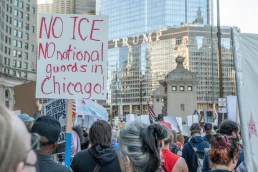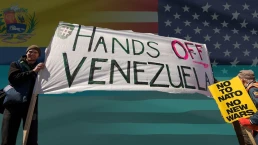What can we do as citizens living in a country whose government first developed nuclear weapons; used them on Japanese civilians on August 6 and 9, 1945; and led the arms race ever since?
By Patricia Hynes, LA Progressive
As I write, five of nine governments with arsenals of nuclear weapons—capable of destroying life on our planet many times over—are engaged in war: the United States (in multiple wars and stoking one with China), Israel, Russia, and NATO members Britain and France in a proxy war with Russia. For decades now, respected nuclear weapons scientists and policymakers have estimated each January how close we are as a world to civilization-ending disaster, by setting the hands of the Doomsday Clock, where Midnight represents apocalyptic nuclear war.
In January 2024, the Doomsday clock was set at 90 seconds to Midnight, the closest it has ever been since its inception in 1947. Throughout 2023 nuclear nations spent 13% more than in 2022 on necrophilic nuclear weapons with the US accounting for 80% of this increase—all while we rush headlong into climate disaster, so palpable this summer. How much closer to Midnight will we be in January 2025?

As a counterbalance to this insanity, we have the UN Treaty on the Prohibition of Nuclear Weapons adopted in 2017 by 122 sensible non-nuclear weapon States. The Treaty entered into force in 2021. By January 2024, 93 countries had signed the Treaty and 70 countries ratified it with more on the way. This UN Treaty is our best insurance as a world against any nuclear weapons use and has as its goal their complete elimination.
But, what can we do as citizens living in a country whose government first developed nuclear weapons; used them on Japanese civilians on August 6 and 9, 1945; and led the arms race ever since? The U.S. spent nearly $98,000 per minute in 2023 on modernizing nuclear weapons and now stands on the brink of using them again given its war-prone posture in the world.
Recent Posts
Anti-ICE Resistance Sprang Up Across Red States In 2025
December 29, 2025
Take Action Now In Texas, North Carolina, Alabama, Tennessee, Florida, and beyond, grassroots resistance to ICE is growing.By Sonali Kolhatkar,…
Trump Suggests US Bombed ‘Big Facility’ in Venezuela. No One Seems to Know What He’s Talking About
December 29, 2025
Take Action Now Administration officials have yet to provide any details about the supposed strike, which would mark a massive escalation in the…
Nigerian Village Bombed by Trump Has ‘No Known History’ of Anti-Christian Terrorism, Locals Say
December 28, 2025
Take Action Now “Portraying Nigeria’s security challenges as a targeted campaign against a single religious group is a gross misrepresentation of…
How Effective Are Protests? Historians Say: Very.
December 27, 2025
Take Action Now Protests change the protesters, their communities and the nation. From emancipation to women’s suffrage, civil rights and BLM, mass…




